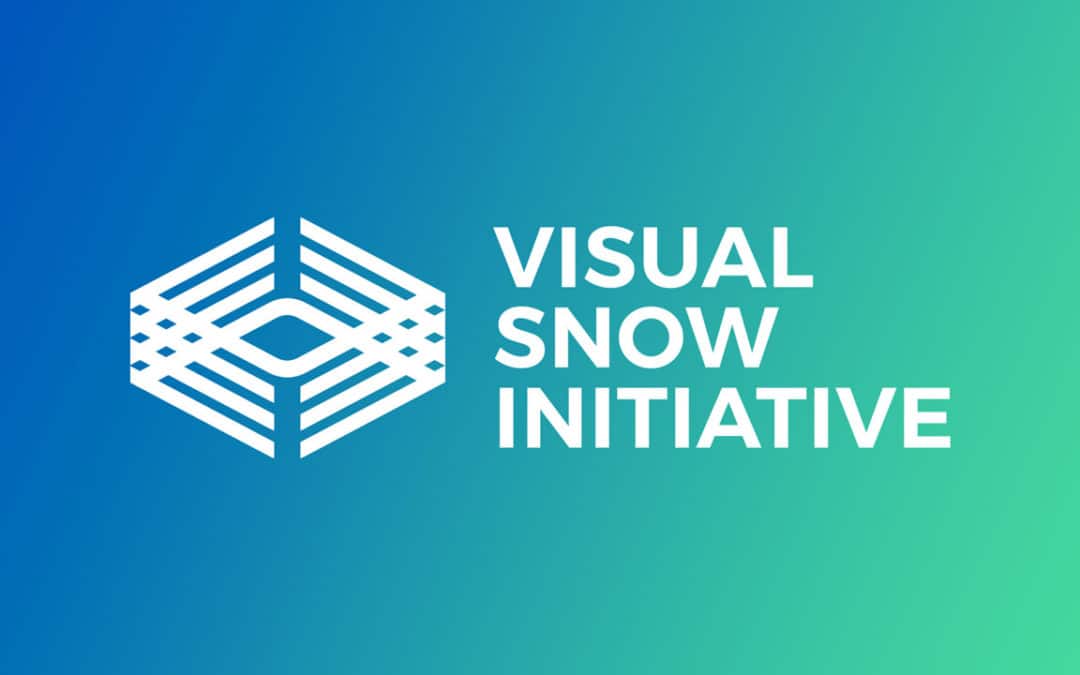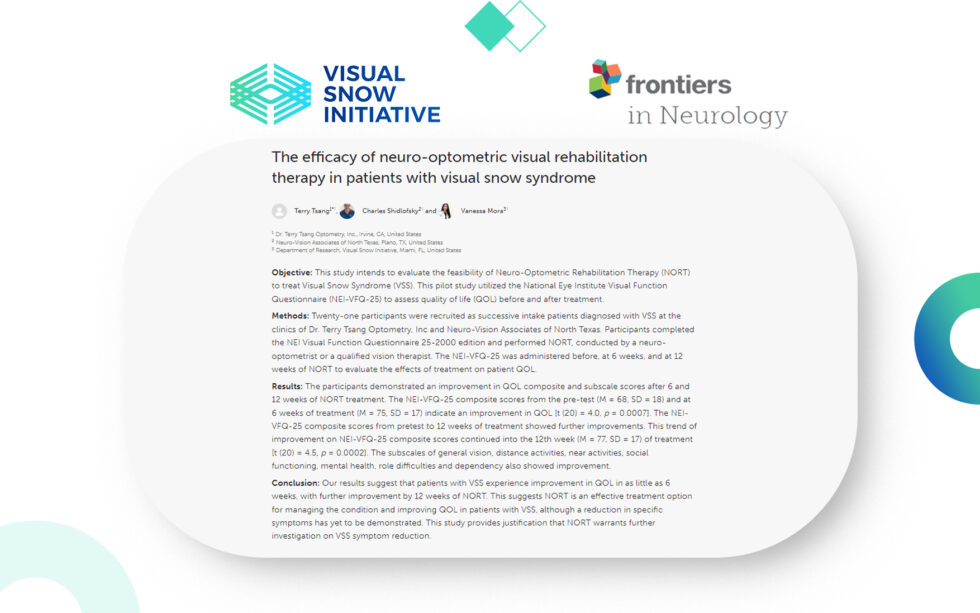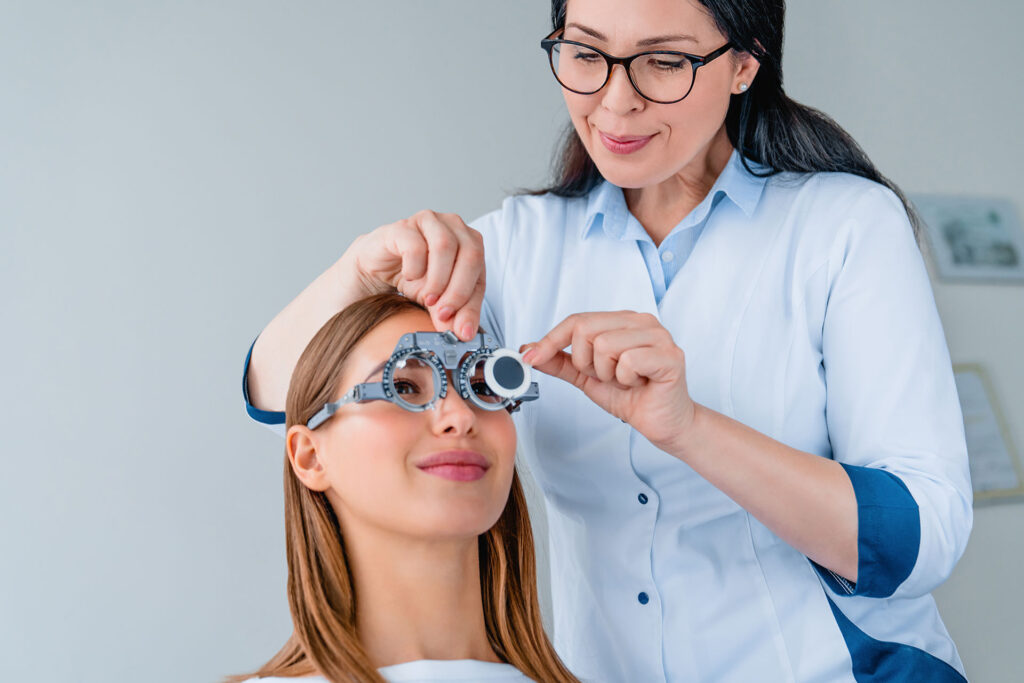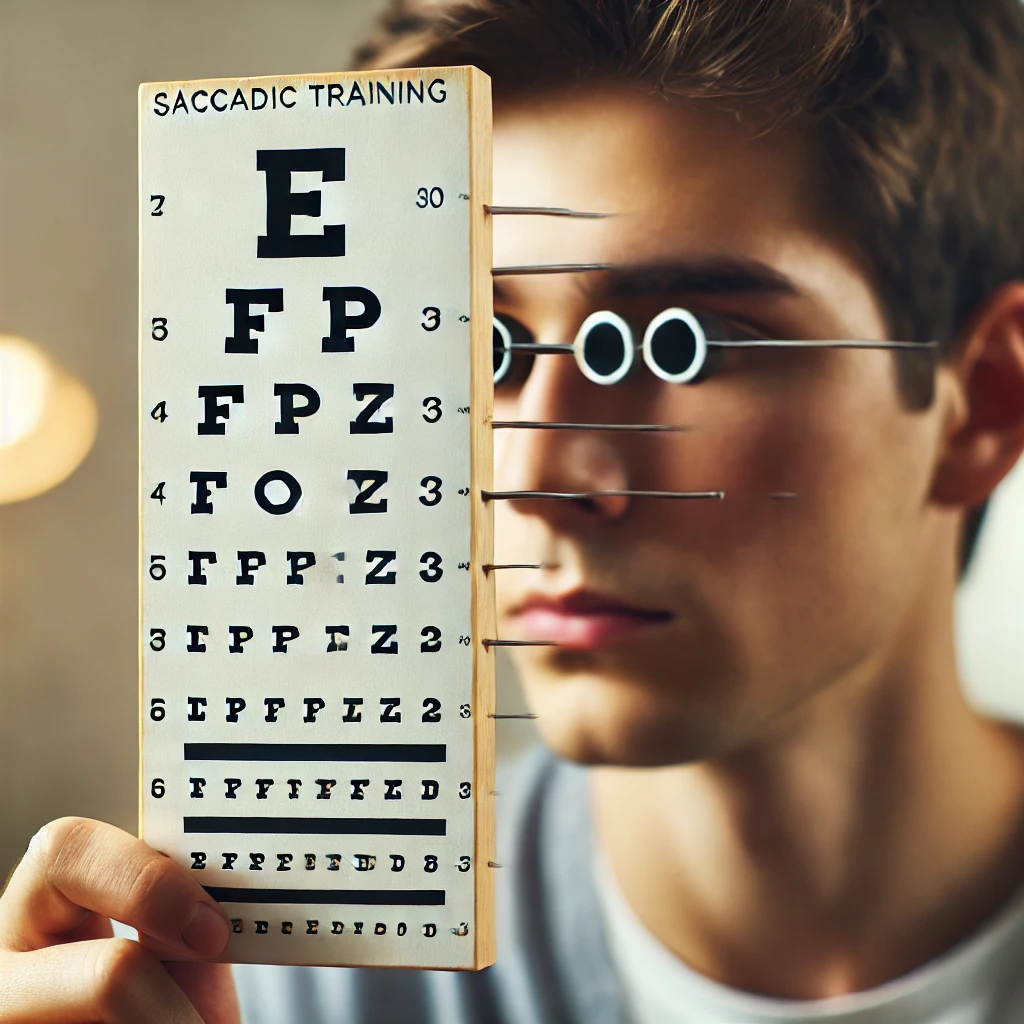Neuro-Optometric Rehabilitation Therapy (NORT) for Visual Snow Syndrome
Welcome to our guide on Neuro-Optometric Rehabilitation Therapy (NORT) for Visual Snow Syndrome (VSS). This guide will provide you with information about NORT, including what it is, how it works, and how it can help manage your VSS symptoms.


What is NORT?
Neuro-Optometric Rehabilitation Therapy (NORT) is a noninvasive individualized regime used to address visual deficits resulting from various conditions, including neurological and neuro-ophthalmological disorders like VSS. NORT aims to retrain the neural processes of the brain related to visual function through the use of various specialized lenses, prisms, filters, and eye exercises. These are customized to each patient based on their specific symptoms and medical history. Research studies demonstrate that patients with VSS who did NORT have experienced symptom improvements in several areas. These include general vision, diplopia (double vision), palinopsia, perception of visual snow (VS) and other related visual disturbances, eye movement deficits, mental health, role difficulties, dependency, debilitation, social functioning, and overall quality of life. VSS patients have also reported improvements in their ability to drive, read, work, and effectively perform daily tasks from close-up or farther away.

What does NORT involve?
The NORT protocol for VSS consists of 12 weeks of in-person, one-on-one sessions, each lasting 1 hour.
In-office examinations using optometric techniques are performed to evaluate the patient’s visual system and other aspects of vision including, ocular motility, fixation, and binocular vision. This can help identify any underlying issues that may be contributing to their symptoms.
Each session includes 3-5 exercises and at-home assignments. The home assignments are performed 5 days a week for 12 weeks and are monitored through follow-up visits. Exercises will be chosen by your physician based on your specific symptoms and medical history.
For more details on the types of exercises that may be performed, please review the study by Dr. Charles Shidlofsky, Dr. Terry Tsang, and Vanessa Mora, “The efficacy of neuro-optometric visual rehabilitation therapy in patients with visual snow syndrome“, published in Frontiers in Neurology.

Who provides NORT?
NORT is delivered by a neuro-optometrist or a trained vision therapist (under the direction of a neuro-optometrist). Activities are customized for each patient to suit their individual needs and follow the activities within the listed protocol.
Note: When scheduling an appointment, confirm that the physician sees patients with VSS, understands the condition, and offers NORT to treat VSS symptoms.
How Can I Find a Doctor Who Provides NORT for VSS?
VSS-NORT Masterclasses for Physicians
Dr. Terry Tsang and Dr. Charles Shidlofsky host VSS Masterclasses around the world to educate physicians about the condition and teach them how to treat its symptoms using NORT. By training more physicians, they hope to improve access to NORT for individuals with VSS globally. Their VSS Masterclasses are affiliated with the Council on Optometric Practitioner Education (COPE), an accreditation program created by the Association of Regulatory Boards of Optometry (ARBO) for optometric continuing education (CE) courses.
Doctors/Researchers with Expertise in VSS-NORT
Attended the VSS-NORT Physician Masterclass


Saccadic Training
Saccades are quick eye movements that help shift focus between objects, essential for activities like reading and tracking movement.
Research shows that people with Visual Snow Syndrome (VSS) face unique challenges with saccades. Patients with VSS often move their eyes too quickly toward distractions or visual cues instead of staying focused on their main target.
For example, if a prompt or non-target object appears, their eyes may jump to it, even when they know it’s not the intended focus. This makes it hard to control these eye movements, leading to more mistakes known as antisaccade errors.
These issues suggest that people with VSS may struggle to balance focus and control over their eye movements. This could be due to hyperexcitability in the brain’s visual processing areas, making it harder to filter out unnecessary information. Changes in how certain brain areas communicate may also make it difficult to process sensory information accurately, resulting in rapid and sometimes inaccurate eye movements.
Saccadic Training helps improve these eye movements, supporting clearer, more stable vision and better awareness of surroundings.
In NORT, saccadic training aids VSS patients in managing visual issues by enhancing stability and focus.
Key exercises include:
- 4 Chart Saccade: Improves eye control by training quick, precise eye movements.
- Wall Saccade with T-Step: Combines eye movement with body shifts for better balance and orientation.
- Central-Peripheral Saccades: Enhances awareness of side vision, helping reduce disorientation.
- 3 Chart Wall Saccades: Improves the ability to organize and track visually while maintaining peripheral awareness.
Additional Resources
NORA List
The Neuro-Optometric Rehabilitation Association (NORA) website also shares the names of other physicians that provide NORT. However, it is important to note that these physicians may not be familiar with VSS.
ABCO List
For people affected by VSS in Australia and New Zealand, the Australasian College of Behavioural Optometrists (ACBO) has a list of NORT for VSS-certified providers in Australia and New Zealand on their website.
VSI Directory
You can also access our list of VSS Physicians & Specialists below.
List of Exercises and Methods Commonly Used in Neuro-Optometric Rehabilitation Therapy (NORT):
Vision Therapy Exercises
- Tracking Exercises: These exercises focus on improving the ability to track moving objects smoothly. They can help with eye coordination, reducing symptoms like double vision or difficulty focusing.
- Saccadic Eye Movements: Exercises designed to enhance the speed and accuracy of eye movements when shifting gaze between points, improving reading ability and visual processing speed.
- Convergence Exercises: These exercises aim to strengthen the ability of both eyes to focus on a single point, addressing issues like eye strain and blurred vision.
Prism Lenses
- Prism Glasses: Specially designed lenses to help with alignment and eye coordination. They can reduce symptoms such as double vision, dizziness, or discomfort caused by visual processing issues. Prisms help the brain to better align visual input from both eyes.
Flippers
- Flipper Lenses: These are special lenses used in vision therapy exercises to help improve the flexibility and strength of the eyes. Flippers are typically used to alternate between near and far vision rapidly. They are often used for exercises to train the eyes to adjust to changing focal distances, which can help with symptoms like blur and difficulty focusing. The exercises can improve convergence, accommodation (focusing ability), and overall visual clarity.
Patching
- Patching: Patching one eye or part of the visual field of one eye is sometimes used to help those with double vision. The patch is placed to eliminate the information that results in the double image from reaching the brain. This helps the brain to process a single, clear image. The patch is frequently placed directly onto the lens surface or worn over one eye to reduce visual confusion and provide temporary relief.
Visual Perception Training
- Visual Integration: Techniques to help the brain integrate visual information with other sensory inputs (e.g., spatial awareness, depth perception). • Pattern Recognition: Exercises to improve the ability to recognize and process complex visual patterns, reducing confusion and enhancing clarity in visual tasks.
Eye-Hand Coordination Training
- Coordination Exercises: Activities that combine visual tracking and hand movements, improving overall coordination and the ability to process visual stimuli in a dynamic environment. These exercises may involve tasks like ball catching, drawing, or using tools.
Balance and Posture Training
- Visual Integration: Techniques to help the brain integrate visual information with other sensory inputs (e.g., spatial awareness, depth perception). • Pattern Recognition: Exercises to improve the ability to recognize and process complex visual patterns, reducing confusion and enhancing clarity in visual tasks.
Neurofeedback
- Biofeedback Techniques: Training the brain to improve certain functions, such as reducing overactive brain activity, which can help individuals with symptoms like light sensitivity or brain fog. Neurofeedback may also be used to help with relaxation and focus.
Light Sensitivity Management
- Tinted Lenses: Lenses with specific tints (e.g., FL-41, grey, or rose-colored lenses) are used to reduce sensitivity to light, which is a common symptom of Visual Snow Syndrome (VSS).
- Light Desensitization: Gradual exposure to light in controlled environments to help the brain become less sensitive over time.
Visual Field Training
- Peripheral Vision Exercises: Exercises designed to improve the awareness and use of peripheral vision, helping individuals who have difficulty detecting objects outside of their direct line of sight.
- Scotoma Training: For individuals with visual field deficits, exercises to train the brain to compensate for blind spots and improve overall visual perception.
And More
These methods, when used in combination, can help patients with NORT improve their visual and cognitive function, alleviate symptoms of Visual Snow Syndrome, and enhance their quality of life. The specifics of treatment may vary based on individual needs, symptoms, and medical history.
Patient Experiences with Neuro-Optometric Rehabilitation Therapy (NORT)
— S.O.
With great gratitude,
R.F.
Sincerely yours,
S.T.
— Anonymous
— Anonymous
I also used to struggle a lot with balance while doing my sport, but this is now completely fixed. My extremely painful daily morning headache (that was there for 2 years) is also completely gone, in addition to a lot of other changes.”
— 22-year-old VSS patient, Norway
After doing in-person and Zoom rehab regularly for about four months, and then more infrequently for about three more months, I saw incredible progress:
1. Ability to bounce back to a baseline quicker after flare-ups 2. Severely lessened appearance of floaters 3. Eliminated feeling of head pressure or fullness 4. Restored balance and spatial awareness 5. Able to go under fluorescent and sunlight without sunglasses
6. Bonus: My vision and focus are crazy sharp now, so I can read much better
One of the most effective parts is the use of colored glasses worn daily for 10 minutes outdoors. I almost immediately started noticing a tolerance for light that I just didn’t have before and less head pressure. She incorporated a holistic approach, conditioning my body to relax while doing the eye exercises, and more importantly, she gave me hope that there are ways to get better from VSS.
I recently had a flare-up, and was sent me new glasses for a 10-day cycle where I did the light therapy with my head out the window because I started seeing floaters again after an increase in stress around Christmas. It is still shocking to me that it worked to make them much less noticeable again. This only brushes the surface of my gratitude.”
— M.R.
— L.
 Thank you!”
Thank you!”
— Y.E.
Eternally grateful,
T.P.
— S.O.
With great gratitude,
R.F.
VSS-NORT Masterclass for Physicians Videos
VSS Masterclasses

First-ever Visual Snow Syndrome treatment with medical experts at the Sydney, Australia Masterclass
1:59
Treating Visual Snow Syndrome: Insight with Dr. Melissa Allen at the Sydney, Australia Masterclass
1:30
Treating Visual Snow Syndrome: Insight with Dr. Shidlofsky at the Sydney, Australia Masterclass
1:49
Treating Visual Snow Syndrome: Insight with Dr. Steve Leslie at the Sydney, Australia Masterclass
1:47
Treating Visual Snow Syndrome: Insight with Dr. Jennifer Mcdermond at the Miami, Florida Masterclass
2:03NORT Testimonials
Testimonials
Additional Clinical Research + Literature About VSS & NORT
- The Efficacy of Neuro-Optometric Visual Rehabilitation Therapy in Patients with Visual Snow Syndrome
- Remediation of Visual Snow (VS) and Related Phenomena in a Neuro-Optometric Practice: A Retrospective Analysis
- Neuro-Optometric Treatment for Visual Snow Syndrome: Recent Advances
- Pediatric Visual Snow Syndrome (VSS): A Case Series
- Visual Snow Syndrome: Evolving Neuro-Optometric Considerations in Concussion/Mild Traumatic Brain Injury
- Visual Snow Syndrome (VSS): An Evolving Neuro-Optometric Clinical Perspective
- New Treatment for Visual Snow Syndrome Being Presented at ACBO Conference
- Visual Snow Syndrome / Find An Optometrist
- Visual Snow Syndrome: Visual Consequences, Diagnosis, And Treatment
- Update On NORT Protocol: Progress From 2023 And Plans For 2024
- New VSS Masterclass in the Philippines
- An answer to visual snow syndrome? – Dr Terry Tsang & Dr Charles Shidlofsky
- Visual Snow Syndrome (VSS) Masterclass in the Philippines 2024
For the latest research, please visit our News & Research page.
Note: Providers may customize treatment plans based on your VSS symptoms, preferences, medical history, and in-office assessment results. Outcomes can vary depending on these factors.
This information is provided for educational purposes only, to support individuals in making informed decisions about their care in consultation with a qualified medical professional familiar with VSS.
For more research-supported treatment options for Visual Snow Syndrome (VSS) symptoms—both noninvasive and pharmacological—please return to the following page: Treating Visual Snow
Support Visual Snow Syndrome Research
All donations to the Visual Snow Initiative go directly to Visual Snow Syndrome (VSS) research.
Your tax-deductible contribution ensures that global research will continue and makes a positive difference in the lives of people affected by VSS.


















